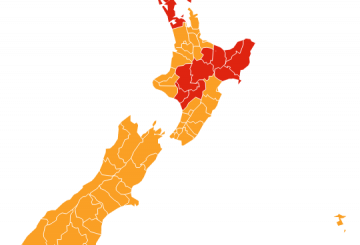John Key 전 총리는 정부가 백신 접종율을 높이기 위해 공포 전술에 의존하기보다는 당근을 줄 필요가 있다고 믿고 있다.
2008-2016년까지 총리직을 맡았던 John Key는 예방 접종이 정상으로 돌아갈 수있는 유일한 방법이라고 말했다. 뉴질랜드 사람들이 해외로 여행하고 원할 때 돌아올 수 있도록 말이다.
그는 사람들이 접종을 받도록 장려하는 인센티브가 앞으로 나아갈 수있는 최선의 방법이라고 말했다.
“당근과 채찍 정책으로 옮겨야 한다. 두려움은 효과가 없을 것 같다. Shaun Hendy가 발표한 7,000 명이 죽을 수 있다고 말하는 것은 효과가 없다. 두려움은 예방 접종을 받은 사람들에게는 효과가 있겠지만 그렇지 않은 사람들에게는 무효하다. 담배갑에 끔찍한 그림을 게재하는 것으로 흡연율을 떨어뜨릴 수 있다고 생각하지 않는다. 실제 금연 효과를 가져오는 것은 담배 가격이 올라갔을 때와 공공 장소에서 담배를 피우지 못했을 때라고 생각한다.”
존 경은 접근하기 어려운 지역에 사는 백신 접종자들에게 포상금을 지급하거나 백신 접종을 위해 돈을 지급하는 것이 옵션이 될 수 있다고 말했다.
그는 봉쇄 비용이 일주일에 10억 달러가 소요된다고 볼 때, 예방 접종을 위해 젊은이들에게 500달러의 인센티브를 제공하는 것은 불합리하지 않다고 말했다.
백신 미접종 사람들은 식당, 술집, 나이트클럽, 심지어 에어 뉴질랜드 항공편과 같은 허가된 장소에 출입이 금지되어야 한다고 전했다. 그렇게 한다면 상당히 빠른 시일 내 미접종 청년들이 발빠르게 예방 접종을 받거나 젊은층 사람들의 생활 방식이 극적으로 바뀔 것을 기대해볼 수 있을 것이라고 밝혔다.
존 경은 오늘 일요일자 Herald와 Sunday Star-Times 신문에 출판된 사설을 썼다. 그는 대중과 공유할 “일관된 계획”을 촉구했으며 정부는 “공포 통치를 중단해야 한다. 우리의 목표가 더이상 거만한 은둔자 왕국로 존재하는 것은 안 된다”고 썼다.
일요일 아침 TVNZ’s Q+A 프로그램에서 Covid-19 대응 장관 Chris Hipkins는 존 경의 발언을 문제 삼았다.
그는 “대단한 정치적 행보라고 생각한다. John Key가 주장하는 많은 것들을 이미 시행하고 있다. 뉴질랜드를 잘난척하는 은둔 왕국으로 묘사하는 것에 동의하지 않는다. 이는 선제적으로 대응하고 적시에 열심히 일한 결과로 세계에서 가장 코로나로부터 자유롭게 된 뉴질랜드 사람들에 대한 모욕이라고 생각한다”고 말했다.
존 경은 사설에서 MIQ 할당 요건을 비판하고 뉴질랜드인들에게 언제 국경이 개방될지 알려줘야 한다고 말했다.
그는 또한 마오리족과 태평양 보건 제공자들에 대한 백신 접종율에 기초한 재정적 인센티브와 12월 1일 이전에 접종을 받은 12-29세의 사람들에 대한 25달러 바우처를 요구했다.





























































